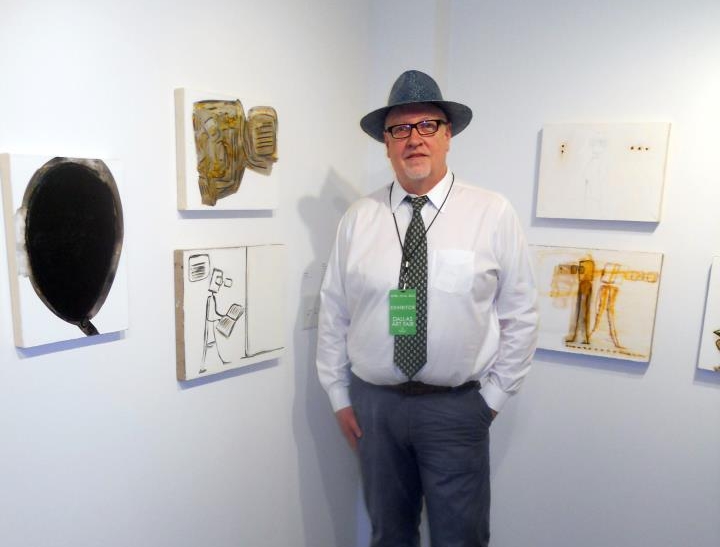Art World
‘They Should Be in Jail’: Artists Accuse Dealers at Los Angeles’s CB1 Gallery of Fraud
One artist says Clyde Beswick and Jason Chang run a “Trump style operation.”

One artist says Clyde Beswick and Jason Chang run a “Trump style operation.”

Brian Boucher

Long before dealer Clyde Beswick established CB1 Gallery in Los Angeles, he spent 13 months in prison for embezzlement. Now, more than 20 years later, a group of artists is accusing the gallerist of breaking the law again.
In an open letter published on Tuesday, nine artists claim that the dealer, along with partner Jason Chang, stiffed them repeatedly and engaged in a pattern of “systematic and unfailing” abuse. Among the letter’s signatories are artists Emily Davis Adams, Elliott Green, Amy Yoes, and Michael Mancari.
In December, Mancari filed a lawsuit against Beswick and Chang after working with the gallery several times. The suit accuses the two gallerists of misconduct ranging breach of contract and fraud to improperly keeping funds from the sale of his work. Though his case was filed in civil court, Mancari believes the two gallerists acted criminally. “They should be in jail!” he wrote in a Facebook post.
CB1GALLERY FRAUDClyde Beswick and Jason Chang owners of CB1Gallery should be in jail! You have sold my work and never…
Posted by Michael Mancari on Friday, April 13, 2018
Adams told artnet News that she estimates that Beswick and Chang owe in excess of $90,000, based on her conversations with disgruntled artists who have worked with the gallery.
“A number of people have just rolled their eyes and said, ‘What did you expect? An ex-felon and art dealer?’” Adams said. Beswick was convicted of embezzlement and filing false tax returns in 1997, as reported in a 2015 Los Angeles Times profile.
According to his lawsuit, Mancari showed his work at CB1 Gallery three times, with works priced up to $17,000. Beswick allegedly wrote him a check for less than what he was owed for the sale of some works, and the check bounced. The artist is demanding “exemplary and punitive” damages of $100,000.
When Mancari accused the gallery of fraud on Facebook, other artists chimed in with comments. “These two have been running a Trump style operation,” Yoes wrote. “Sick.” Ain Cocke commented that he is owed “a large amount” by the gallery.
Artist Brett Reichman, another signatory, confirmed to artnet News that he filed a “limited” civil suit, in which damages are capped at $25,000. (It’s cheaper than filing a standard civil suit, he explained.)

Installation view of Lisa Adams’s “America the Beautiful” at CB1 Gallery. Photo via CB1 Gallery Facebook.
Thus far, Beswick has not admitted any wrongdoing. “We are working hard to resolve any and all issues with the artists whose work we have shown,” he wrote in an email to artnet News. “We truly love the art we have exhibited and respect the artists. I will not be making any further statement at this time.”
The Los Angeles Times profile paints a detailed picture of the dealer, who began collecting artists like Catherine Opie and Lari Pittman early in their careers. His collection was of sufficient caliber that when he went to prison, tech giant Peter Norton bought the works outright. Beswick opened a gallery in downtown LA in 2010 and then moved to the arts district in 2015.
While Mancari has made his anger at the gallery clear, Reichman says he still feels some measure of empathy for the dealer.
“I’m not out to destroy Clyde Beswick,” he told artnet News. “Even though he’s put me through a lot of shit, I still have more empathy for him than anger. I view him as such a tragic, deeply flawed person that I don’t want to damage him more than he has already damaged himself.”
The situation lifts the veil on something of an open secret in the art world: Some dealers float their operations by not paying their artists. And many of those artists, desperate to show their work no matter what, keep quiet so as not to gain a reputation as whistleblowers.
Adams says that a number of artists have even asked her for an introduction to CB1 Gallery despite the allegations of misconduct. “They tell me, “I’d rather show my work even if I don’t get paid,’” she says.